By Frank Iannamico
Armorer for Zion
In the Middle East, the British held the Palestinian Mandate and had done so since before World War I, but during 1948 the United Nations was in the process of debating and voting on the creation of two states from the old Palestine. One was to be for the Palestinian Arabs, and one for the Jews of Europe, who had made it through the horrors of the Nazi holocaust. Brenner had an uncle who was an ardent Zionist. He called young Burton on the phone one day to ask if what he had heard through family gossip was true, that he was interested in firearms. Brenner answered yes, and the uncle said he had something he thought he would be very interested in seeing.
Brenner made plans to meet with his uncle, and together they traveled from New York by train into New Jersey. They were picked up at the train station by a mysterious unknown man and delivered to what turned out to be an enormous chicken farm. One of the barns was built into a hillside, creating a substantial space underneath the floorboards. As they entered the barn Brenner saw thousands of rifles and boxes of pistols. Brenner was told that the guns had been brought back one at a time from Europe and Asia. They were a mixture of everything: Japanese Arisakas, German Mausers, Polish Mausers, Belgian Mausers, all the contract Mausers of World War II. There were boxes filled with Lugers and P-38s in the 9mm chambering, and lots of various .380s of all types: the list went on and on. It seemed that this material had been donated through Jewish war veterans and similar groups for the Israeli cause. Brenner was asked whether he would contribute some time checking each weapon as to headspace, bore condition, and general safety, with concentration on all those that were of universal Mauser 98 design firing the 7.92x57mm cartridge. All other rifles and calibers were to be put aside for the moment.
Intrigued, Brenner volunteered, and spent the next four months working on the project, traveling from New York to spend one or two nights at a time at the farm. After checking each rifle it was dipped in cosmoline to protect the metal surfaces from rusting while in storage or en route to Israel. After the sealed crates were taken away he would start on a new batch. Although the supply of guns diminished in a steady trickle, occasionally a fellow would show up to drop off eight or ten guns from the trunk of a car and then drive away without discussion.
To complete the inspection procedure on each rifle, Brenner decided it would be a good idea to stamp each one with a sort of proof, and obtained an inspector’s stamp with a sunburst mark. He would stamp each gun alongside the rear sight. After a few months the supply of suitable guns dwindled down to nothing thus ending his work at the clandestine New Jersey “armory.”
Some months after Brenner finished his work at the chicken farm, his uncle called and asked if he was interested in the guns that remained. Brenner, then barely 17 years old, was being told that what looked like the biggest pile of guns he had ever seen in his life was being handed to him gratis. It turned out that there were around 1,200 military rifles and 350 pistols. Brenner, along with a couple of friends, rented a truck and over a period of 3 months of shuttling back and forth between New York and New Jersey, got all of the guns out of the barn and into a friend’s basement in Brooklyn. Brenner then proceeded to wholesale the arms to various stores in the New York and Philadelphia areas.
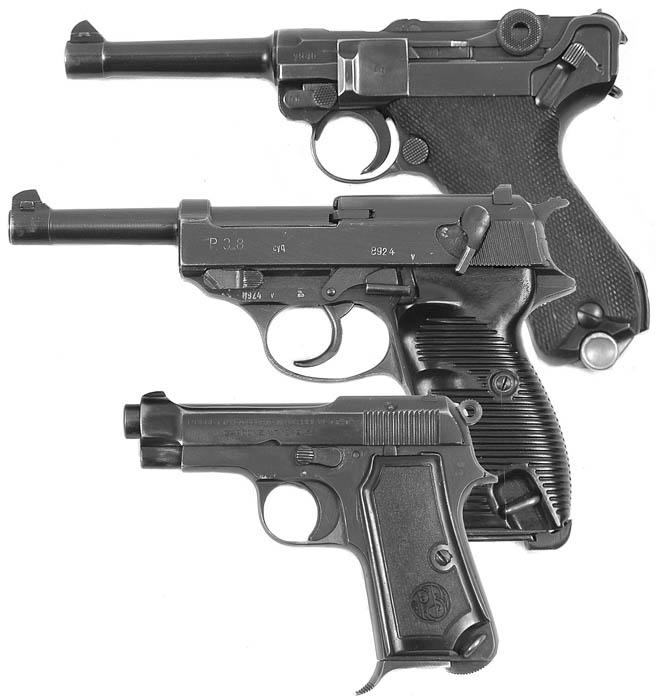
Years later in 1955, Brenner made his first trip to Israel to buy surplus material. The Israelis had just finished their 1954 war with the Egyptians and had captured considerable quantities of weapons. He bought a great deal of interesting material on that trip, and while inspecting some of the lots for sale, found some of his chicken farm rifles, recognizing them by the sunburst stamp he had applied a few years before alongside of the rear sight.

Trade Wars
With over 50 years in the surplus business, Brenner met many people, and were mentioned in his memoirs for their efforts in making available to collectors and shooters many guns of considerable interest.
He had competed with most of them, along with just about everybody in the surplus side of the gun business. Some of these encounters ended up being pleasant run-ins and associations, and even collaborations from time to time. Others were totally awful and potentially dangerous, and if one were not a trusting person, some of the things he experienced would lead one to believe that there was little honor amongst surplus gun dealers.
In first place among these would be Sam Cummings. Sam, by his own words, was the greatest gun dealer of the 20th century. If size counts, the statement has some meaning. But one would have to look at all the aspects of the man’s personality, his character, his relationships with people, and the conclusion one would come away with might be very different from that of his self-described label. Brenner spent the better part of a year with Cummings in Europe. They shared digs in London, spent some time socializing together, and looked at an awful lot of guns in each other’s company. Brenner was always left with the feeling that he absolutely had to watch his back, that there were no limits to Cumming’s business duplicity, that he had no sense of honor. If not careful, Sam could leave another person humiliated, embarrassed, and even affected adversely in finances and reputation. Brenner opined that if measured by the milk of human kindness, Sam Cummings was one very dry individual.
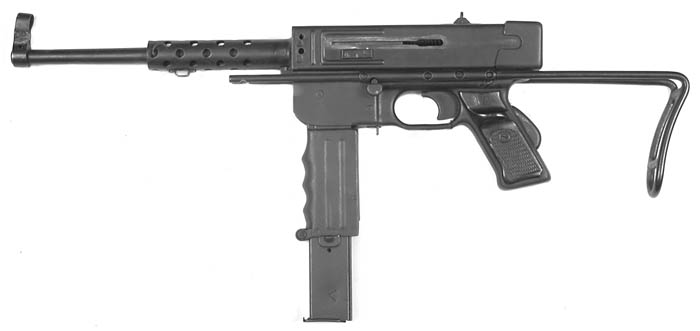
During the 1950s, a whole new group of young guys popped up, all dealing in various aspects of the surplus game. Some specialized in parts, some in ammunition, some in the weapons themselves, and their paths continued to cross. Fellows like Val Forgett, who went on to create Navy Arms, was particularly well known for his inventiveness in basically creating the black powder sporting and shooting business in the United States.
Charlie Steen kept doggedly grinding away with the parts business, creating an absolute empire of his own. Known as “Service Armament Corporation” and “Steen Armament Corporation” (later shortened to SARCO) and operating out of New Jersey, Charlie’s operation continues as a supplier for a great diversity of surplus arms parts.
Century Arms and the Souter family, father and sons, are deserving of considerable words. Brenner came up against them on deals time and time again. They went on to become probably the single largest importer of surplus weapons in the game, as far as raw numbers and quantity go.
Hy Hunter of Burbank, California was a real character that in many ways was a step ahead of the game, both in the surplus importation business and in the manufacturing side. A whole book could probably be written about his colorful ways. His store was famous for having the ceiling decorated with thousands of handguns – real ones – that hung suspended there like an expansive constellation.
Numrich Arms Corporation (now called Gun Parts Corporation) is another purveyor of parts for surplus and other weapons. Located in West Hurley, New York, the company really got started when it purchased Martin Retting’s spread and excess inventory, which he left behind in New York when he moved to California.
There were dozens more who have been successful and who undoubtedly have had great adventures as Brenner, handling the most complex of deals in the midst of the incredibly intricate ropes of government licensing, shipping, and all aspects of getting a product from an overseas depot into the hands of an American collector.
Invading South America
During the late 1950s, the surplus dealers understood that with Brazil being the largest country in South America and having the biggest army, there had to be surplus material there. It was just a matter of finding a way to tap into what would surely be a very large supply of guns that the Brazilians no longer needed.
Golden State Arms employed a young Spaniard named Daniel Medilla. He had come over from Spain to learn the gun business. He spoke English, and taught himself some Portuguese, making him fluent enough to ably represent the company. As usual, it took at least six months of correspondence to affect a relationship with a commercial agent who seemed to know his way around, and understand what they were trying to do.
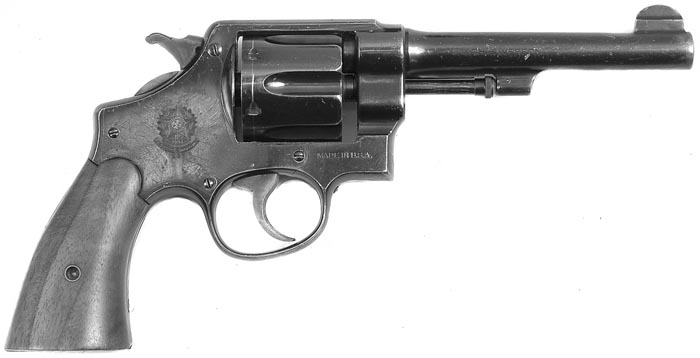
Dan took a tour all around South America, spending a good bit of the time in Brazil, and came back to report the availability of 10,000 M1 Garand rifles. At that time, a few small lots had come in from England, but for the most part there was a clamoring market for Garands and no way to fill it. This particular lot of rifles had been handed over to a Brazilian expeditionary force that had gone to Italy in late 1943 after Brazil had declared war on the Axis. This was their contribution to the war effort.
When Brazil finally sent out troops, it dispatched a light division, which arrived in Italy, marching off their boats with Mauser bolt-action rifles that were quickly taken away and replaced with U.S. M1 Garands. At the conclusion of their involvement a year and a half later, the Brazilians cagily marched back aboard ship, taking the Garands with them. Upon their return to Brazil, however, the Garands were piled into the armory because the caliber and type of gun was not standard in the Brazilian army. Aside from the M1s, Dan Medilla found quantities of miscellaneous rifles representing pretty much what the Brazilian army had utilized over the past hundred years. There were Winchester 1873s and 1892s. There were early American bolt-action rifles such as the Remington Lees. There were early Model 1888 German Commission guns in various configurations of rifle and carbine. Golden State was offered 20,000 guns, which they imported.

The barrels on the Garands were ruined from firing corrosive ammunition, and required replacement by Golden State, but it wasn’t long before they ran out of spare barrels. Brenner soon figured out a way to replace Garand barrels by using reconfigured 1903 Springfield barrels. The Garands were sold to Sears were they sold out almost overnight. An urgent request was received from Sears for thousands more which, sadly, there were no means of obtaining.
Sam Cummings of Interarmco opened the first Argentine deal during a period when Sam and his organization were still in close relationship with Golden State Arms and were to join forces in the Argentine deal. The first transaction consisted of a vast quantity of Model 1891 Mauser rifles, essentially the old Belgian pattern, in 7.65x53mm caliber. Their most prominent feature was a projecting magazine well descending below the stock in front of the trigger guard.
The Argentines had tens of thousands of the Mausers in absolutely beautiful condition. Unlike other Latin American countries, they had kept their older guns in top shape. Argentine troops being European trained (and largely of European background) were of advanced quality as compared to their neighbors, so the standards for maintaining equipment were kept very high. Golden State purchased all of these many thousands of Model 91 Mauser rifles, complete with bayonets and scabbards.
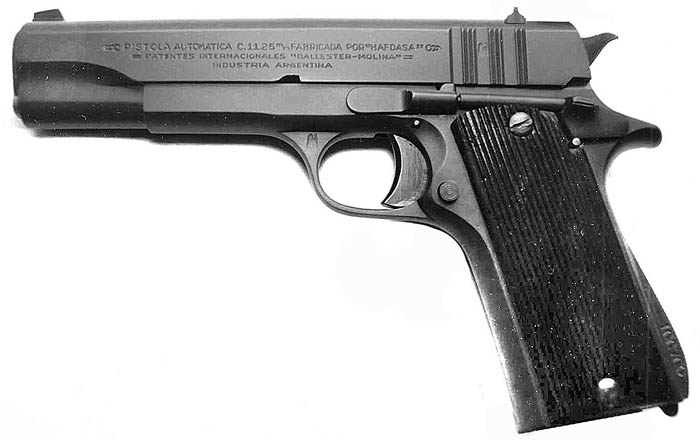
Argentina represented an enormous potential marketplace from which to secure surplus goods to fill the American demand. They had set up a factory, which was fully licensed by Colt, and over the years turned out a very large volume of the Argentine 1927 Systema pistols, which were eventually brought into the United States in big numbers. Another deal was the .45 caliber Ballester-Molina pistol, an Argentine modification of the basic 1911 design.
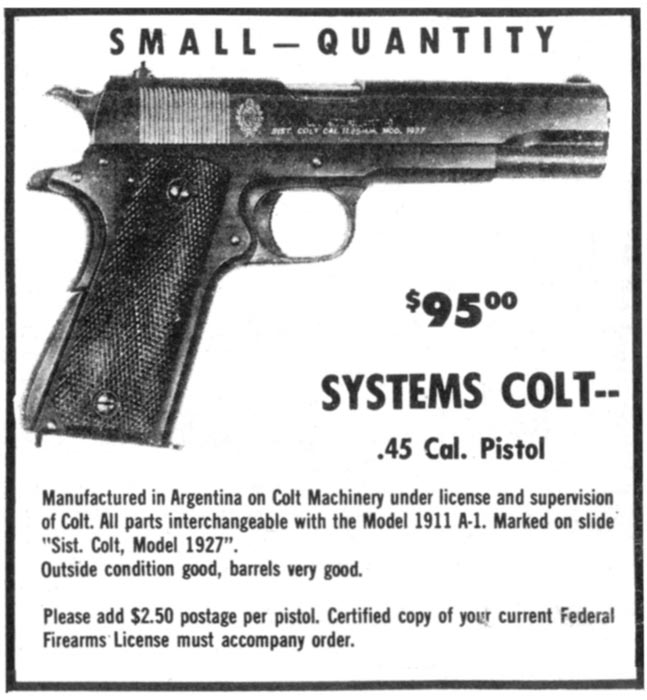
Everything the Argentines had was marked with their national coat of arms, which was a liberty cap on a sword with embellishments. Unfortunately all of these national insignias had to be removed. Nothing was to leave the country with the insignia intact. There was nothing to be done except set up the grinding machines and start belt-sanding off every insignia from all of these Argentine weapons. To take essentially new condition weapons and grind them to remove an artistically rendered crest was just a crime against collecting, but that is the way it was. Golden State took the problem as far as some of the Argentine congressmen in the country’s parliament. Eventually the law was turned around and subsequent lots of guns that came out of Argentina had the insignia left in place.
Agency Business
It should not come as a surprise that no one could be in the surplus arms business on a substantial basis and fail to eventually cross paths with the Central Intelligence Agency. It seems that back in the early days of the cold war, the Agency’s policy was to accumulate and hold large quantities of various weapons in order to place them in a given country at the right time, naturally in a surreptitious manner so as to keep the good name of the United States out of Agency games. To execute this policy, the CIA in its own wisdom deemed that, rather than deal directly with a highly visible purchase of this material from foreign government surplus sources or new production, it would utilize legitimate surplus arms dealers as cooperating suppliers for its weapons business.
Within only a year or two after the Agency started up in or around 1949, it became busy purchasing considerable numbers of different kinds of weapons. One of the first fronting firms that were used to import the material into the States for shipment to various CIA warehouses was Golden State Arms. A man named Leo Lippi managed these dealings from the Agency side. Leo was a strange character, a cameraman who was the product of the Hollywood motion picture scene. He was an unlikely looking fellow but he had authority to spend big money. Apparently, shopping lists were given to him on a regular basis, which he filled, mostly, from Golden State Arms.
Brenner originally had no idea that some of the material he was buying was intended for the CIA. An example of such a transaction concerned a lot of 40,000 MAT French 9x19mm submachine guns found in Vietnam. At the time, the U.S. was pouring in huge amounts of American military material, and wanted all of the non-U.S. items out of the warehouses and supply channels. Arms left behind by the French were clogging up the program. The MAT 49 submachine guns were purchased for $1.50 each. Upon conclusion of the sale, the MAT weapons were shipped to Puerto Rico. Shortly after the guns landed in Puerto Rico, they suddenly disappeared, all 40,000 of them.
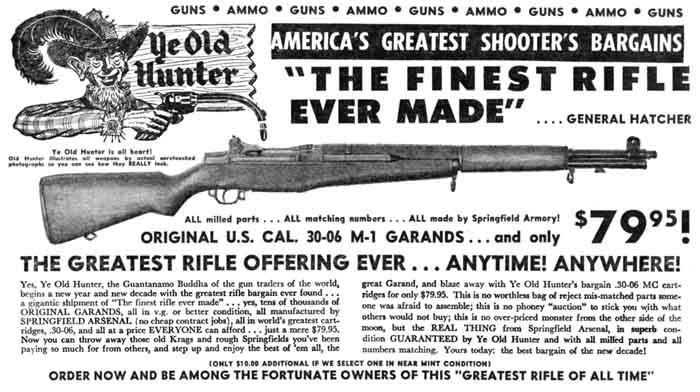
Another instance of assisting the CIA involved the purchase of heavy Madsen machine guns from the factory in Copenhagen. There again, the goods were bought, shipped to the U.S., and then simply disappeared. Golden State Arms was actively, if quietly, participating in the effort to assist the CIA’s program of obtaining surplus weapons. The business organization was big enough that the left hand did not necessarily know what the right hand was doing and as the buyer, Brenner had no official understanding of the fact that he was procuring equipment destined for the CIA, although he presumed there was some involvement with governmental agencies.
Fidel Castro was always a focus of the CIA’s attention. At the time Castro came down from the Sierra Nuestra into Havana, he was armed for the most part with Springfield Model 1903 service rifles. That was pretty much the rifle of choice for the rebel Cuban army. Many of them were lifted from the legitimate Cuban army, but a great portion of them came into the hands of Castro from the CIA. It may surprise the reader to learn that in the beginning of this phase of history (and even then the fact was not widely known), it was generally felt in U.S. government circles that Castro could turn into a democratic fellow who would run Cuba righteously and do well by the people.
Thus the attempt was made by the CIA to give the Cubans military aid in the form of Springfield rifles. The weapons themselves had come out of Italy through an earlier Golden State purchase. An unknown buyer purchased a pretty sizable fraction of this batch from Golden State domestically. The guns were in California, fresh from Italy, and suddenly there was an order for 3,000 of them. They were promptly boxed up, put on a truck, and were gone, later showing up in Cuba. In addition, the CIA was well under way in buying up and maintaining lots of French, British, German, and particularly Russian arms so that these weapons could be dropped into trouble spots without “made in USA” tags on them. The connection between Leo Lippi and Golden State Arms lasted six years and was then abruptly cut off. Brenner believed that it was CIA policy to periodically change their suppliers so as to be able to restrict the flow of information about their activities. The next guy called upon by the Agency was Sam Cummings, who lasted as a CIA supplier for some time. Since he was as heavily involved in the surplus business as Golden State, he was able to supply their needs in good order. Eventually, his relationship with the Agency soured and he got into serious tax problems with the Internal Revenue Service. In an attempt to salvage his business and personal fortune, he left the United States.
After Sam Cummings eventually retired from cloak and dagger operations, there were two or three other chaps standing by to assume his mantle with the CIA’s clandestine gun business. Russia had attacked and invaded Afghanistan, and the Afghan locals had to be armed in a manner superior to what their hillside cottage industries could make available for resistance.
With the end of the cold war, the need for maintaining a supply of covert weapons was not as important an item as it once was. As a result, enormous quantities of U.S. arms, all having been bought with taxpayers’ money, were scrapped at depots in New Jersey and other places along the eastern seaboard under the Clinton administration.
(Look for the final chapter of the story of Burton “Bob” Brenner in an upcoming issue of Small Arms Review.)
| This article first appeared in Small Arms Review V12N10 (July 2009) |











